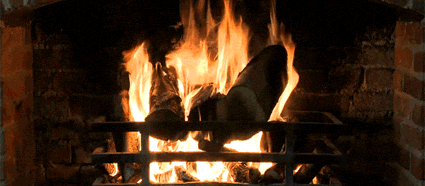Sign up for the daily CJR newsletter.
During Christmas week, most schools are out of session, so students won’t be doing any “caroling.”
Oh, maybe they’ll be singing, but they won’t be doing the other kind of “caroling,” sitting in a small cubicle in the library to study.
Believe it or not, the two uses are related, even though we don’t spell cubicles that way anymore. There’s even a reference to Stonehenge in the mix.
Around the 12th century, according to The Oxford English Dictionary, a French word of uncertain origin became known as “A ring-dance with accompaniment of song.” It had nothing to do with Christmas for about 200 years, when it began to be used for “A song or hymn of religious joy,” the OED says. It wasn’t long before it was used almost exclusively for songs and hymns about Christmas, though Shakespeare had people singing a springtime “carol” in As You Like It, written at the end of the 16th century.
Because spelling was far from standard until relatively recently, “carol” was spelled with a double “r” or double “l,” or began with a “k,” among other variations. In the early 15th century, the OED traces the first written use of a variant, “karolles,” to mean “A small enclosure or ‘study’ in a cloister.”
It’s not too big a leap, then, to see how we came to think that any small enclosure where someone can study would have a homophonic name, “carrel.” Merriam-Webster’s Unabridged Dictionary says that spelling was first used in 1593, as a variant of the middle English “carole,” or dance circle, though the British OED says it was first used in 1919 to refer to the space in the library, rather than in an abbey or cloister.
So where does Stonehenge come in? It was also called a “carol,” the OED says, since it is a “ring of stones.” In some contexts, all one needed to say was “carol,” and people knew the reference was to Stonehenge.
While all “carols” may not be Christmas songs (or mysterious rings of stone), all “noels” are. If you want to be overly precise, though, a “noel” is really a Christmas carol of French origin. The French “nöel,” related to words indicating birth, was originally a shout of joy to celebrate the birth of Christ, often spelled “nowel” or “nowell” in English. Shouting and singing, of course, are very close, so “noel” became songs related to Christmas, and then came to mean Christmas itself.
“Noel” needs to be capitalized only when referring to the holiday, not when it’s referring to the songs. (Crossword puzzles often have “noel” as answers to the clue “carol.”) You rarely have to use the umlaut (two dots) on the “o,” though, unless you’re trying to impress someone. But if you’re a baker and make that lovely cake that looks like a fallen tree, you should spell it “bûche de Noël,” including all the appropriate accents.
“Bûche” means “log” in French, and that cake is often called a “Yule log.” “Yule” was originally a pagan festival coinciding with the winter solstice, but Christians co-opted it to mean their own festival. Though many dictionaries list “yule” as uncapitalized, the Associated Press Stylebook suggests capitalizing it in all instances.
The original “Yule log” may have been thrown on pagan fires to symbolize the hope for more light. (That hope was almost instantly realized, since the pagans were celebrating the shortest day of the year, but they probably didn’t realize that the log had nothing to do with it.)
Now, the “Yule log” is a special log put on Christmas fires, which is supposed to remain burning until it is consumed. Or, for Christmas Eve, you might be able to watch the looping video of a burning log, a tradition that apparently started in New York.
That video, of course, is accompanied by “carols.”
Thus we have come full circle.
Has America ever needed a media defender more than now? Help us by joining CJR today.







